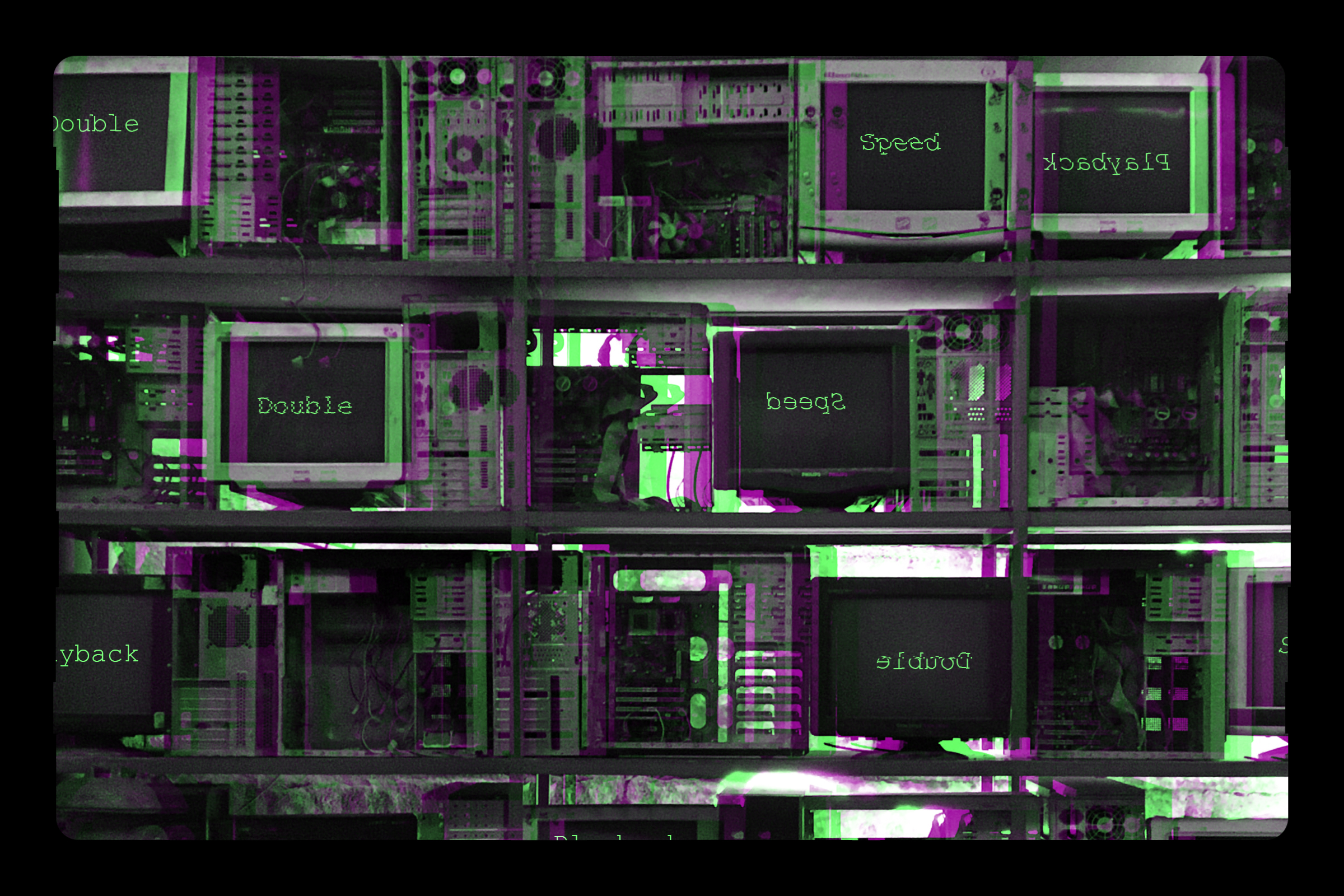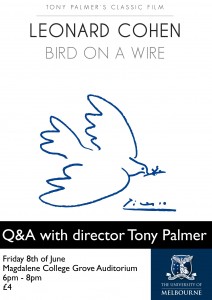
Double Speed Playback
by Charles Pidgeon | January 3, 2020
Netflix has recently started trialling a playback speed feature on their smartphone app, allowing viewers to watch content at faster or slower speeds.
Brad Bird, director of The Incredibles (2004), has described this trial as “another cut to the already bleeding-out cinema experience”, and it’s easy to agree with this assessment. The millennial mode of living has long been characterised as distracted, fragmented, and time- poor. This seems to seal the deal: washing mind-numbing stimulation across our eyeballs at an ever faster rate to sate our appetite for distraction.
The thing is, I watch YouTube videos on double speed. Frequently. I was largely uncritical of this practice, although I would sometimes feel a swell of shame. I’d lament my desperation to ‘get to the point’, to consolidate the message – to consume it. But now, the idea of Netflix’s playback feature has got me puzzling at the practice of watching at double speed (or 1.75x if the video is dense). Why would anyone do this? Why would I do this?
My first reaction is the most pacifying for self-worth: it’s a hangover from watching lectures on double speed. I can open this container of information and digest it twice as fast as normal. The YouTube video becomes a box filled with a certain amount of knowledge: to be opened, rifled through as quickly as possible, and then closed again – its benefit extracted, its lesson learnt, its information ‘parsed’.
Comments under guides about how to use the playback speed function laud this efficiency. Watching at double speed becomes one of those tips and tricks that ‘successful’ people use to get ahead. These comments rehearse the ideals of self-help books and How To Get Rich Quick podcasts. Double-speed-watching becomes a use-focused tool. What is the optimal way to “use” this video? How do I assimilate it, better myself?
Working with this model means that the faster you watch, the better. It’s drudge work to be done quickly. The problem is, this isn’t really the idea YouTube is built on. Surely YouTube is about entertainment, not drudge work? And surely watching a sped-up video compromises this entertainment? This is the tricky part – because I’m not sure it does. Could watching fast translate to a unique, but valid, aesthetic practice?
In The Ecology of Attention, Yves Citton speaks of YouTube, Amazon, Google, etc. as “major interfaces” which “pre-format our collective attention”, whose “protocols have global effects”. Small changes to interface have astounding impacts: the time wasted by workers playing Google’s Pac Man game is estimated to have lost the global economy $120 million in a day.
***
The most probing question that Netflix’s trial stirs is what the difference is between a YouTube video and a Netflix original. Ostensibly, not a lot; intrinsically, we can’t help but feel that it’s almost everything. Netflix and YouTube are both international, multi-billion-dollar entertainment streaming services based in the US. They are profit driven and algorithm optimised. Should it be surprising that their playback experiences are converging?
Intrinsically, however, we have long accepted that the medium is the message, and long internalised the rules that make ‘YouTube video’ a genre and ‘YouTuber’ a career. Make-up videos, vlogs, clickbait, How-Tos; any of the decidedly YouTube genres all seem to have their uses in a way that Netflix content does not. They drive towards this idea of video as container (for information and/or entertainment). The format suggests certain qualities: that they’re fleeting, mindless, not serious art – that they’re to be used and forgotten. YouTube bids for virality, and viruses pass quickly once the fever has burnt out.
This idea of the YouTube video as consumable is built into the website’s architecture. The black square with the white time-stamp hovers above every thumbnail, forming part of the wrapper. On YouTube, as you’re making up your mind about what to watch, the video length is there, bargaining. 7 minutes, I have time for that. Compare this to Netflix or Amazon Prime, where the thumbnail presents itself without a timestamp. If you hover over it, it gives a synopsis. You are meant to be attracted to the image, then the story, and then the much smaller timestamp as an ancillary consideration. Rather than using duration as part of the attraction, Netflix presents its content as timeless.
***
Jia Tolentino, New Yorker staff writer and cultural critic, writes in her essay “Always be Optimising” about the ‘fanatic high functionality’ structured into expensive yoga classes. Tolentino sinks beneath the surface of a culture that stresses punishing and nonsensical self-optimisation as aspirational. Her analysis deep dives into barre classes (maximum body toning in the shortest time), Sweetgreen’s salad (eaten with one hand while the other answers emails), and athleisure (which unites fashion and exercise to insist on bodies optimised not just to be healthy, but to be displayed as healthy). The culture of self- optimisation that Tolentino identifies seems worlds away from double-speed YouTube stupors. And yet she believes that ‘It’s very easy, under conditions of artificial but continually escalating obligation, to find yourself organising your life around practices you find ridiculous and possibly indefensible.’
Maybe part of YouTube double speed is one of these coping mechanisms for offloading – for a time at least – the sense of escalating obligation. There is something about double speed watching tied into the idea of optimising – a way to ‘use’ the video in half the time, whether this ‘use’ is consuming the information or applying it as a self-soothing practice. This is part of what Tolentino would call the ‘amoral project of learning to get better at life under accelerated capitalism’. It’s okay to watch that stupid video in your Recommended, if you do it on double speed. That way, you’ll only waste half the time. A five minute break is better than a ten minute break.
After watching a video on double speed, ‘normal’ pace feels strange – there is the unsettling feeling that something insidious has taken place. Like driving on a highway for hours and then slowing down to exit. This accelerating image of fast cars and faster YouTube videos is the closest thing to the aesthetic of double speed watching; it also drives at the heart of the culture Tolentino identifies. She describes eating Sweetgreen’s salads rapidly as part of the urban professional rat race, and the unsettling feeling that lurks beneath the glossy, healthy veneer: ‘at Sweetgreen, I eat even faster because (as can be true of many things in life) slowing down for even a second can make the machinery give you the creeps.’
In April 2017, a provocatively titled article did the rounds: ‘Netflix’s Biggest Competition Is Sleep, Says CEO Reed Hasting’.
‘You know, think about it, when you watch a show from Netflix and you get addicted to it, you stay up late at night,’ he said. ‘We’re competing with sleep.’
Instead of spending twice as long watching, we can watch at twice the speed, then go to sleep. But this is far from guaranteed – if you can watch twice as fast and the same amount of time is available, it’s easy enough to just watch twice as much. Netflix’s playback speed feature becomes just another strategy aimed at transfixing our attention, and thereby improving performance “on the margin”. It’s clever. And it’s nothing more than basic optimisation.∎
Words by Charles Pidgeon. Art by Neil Natarajan.




